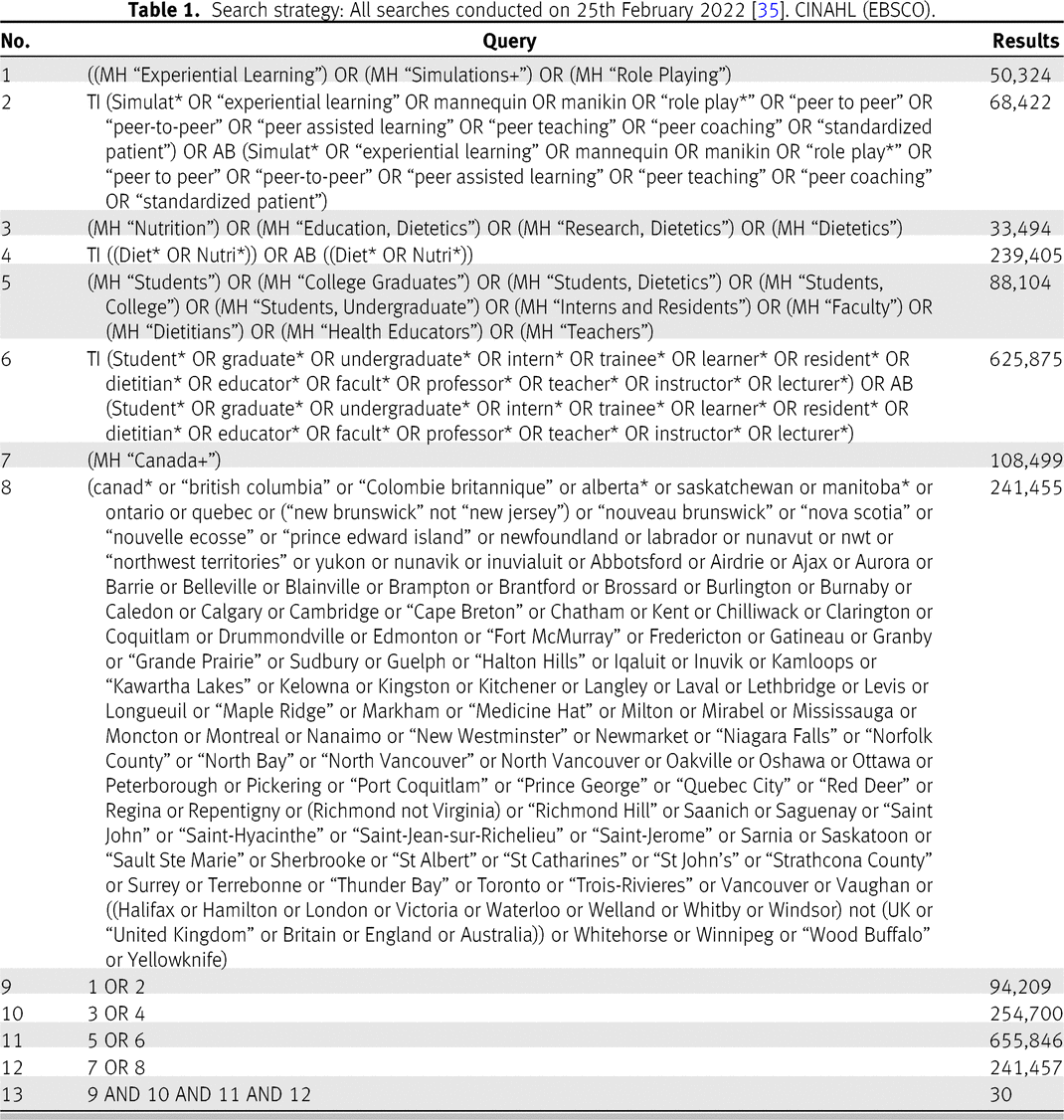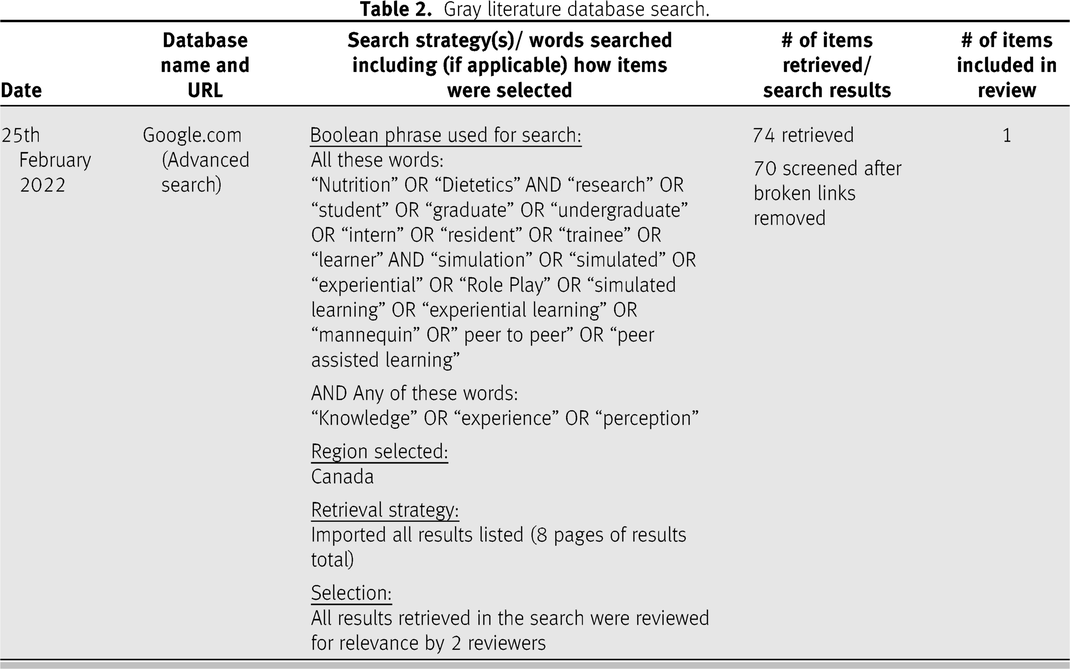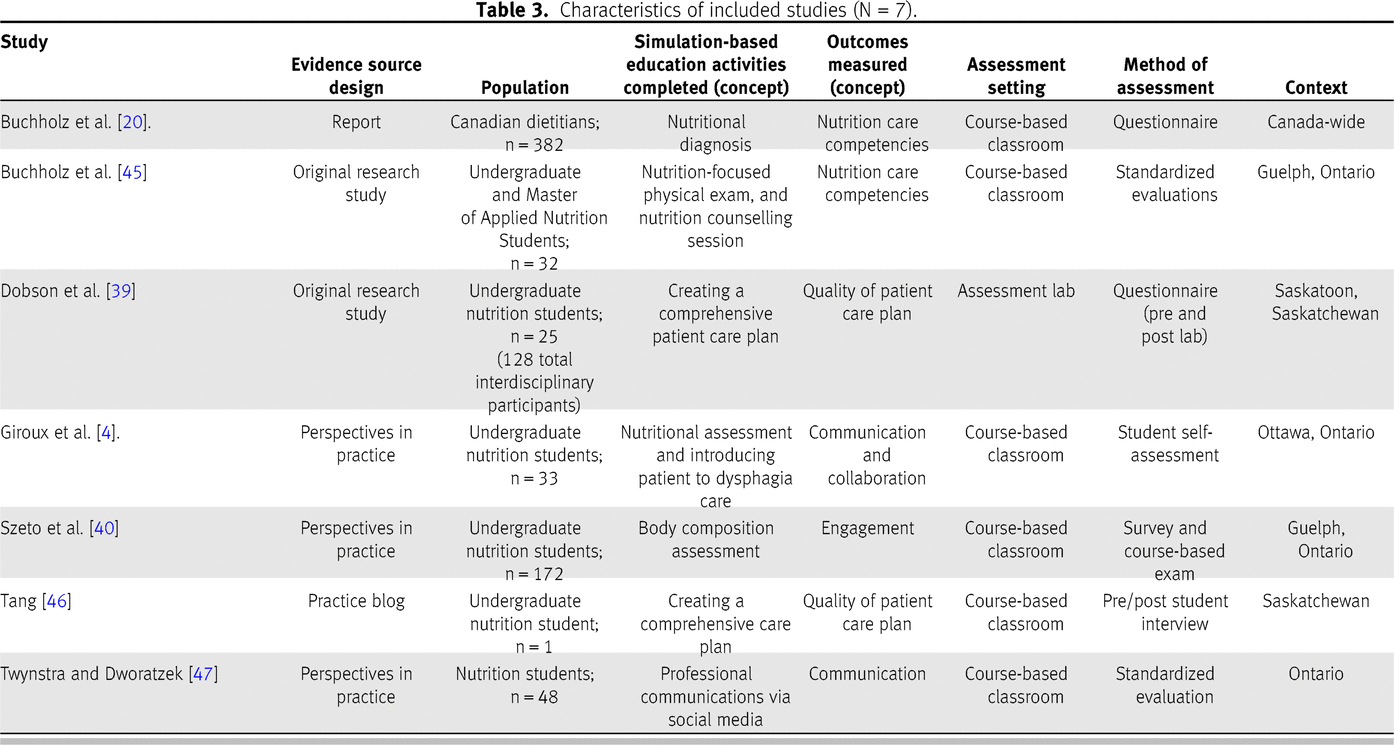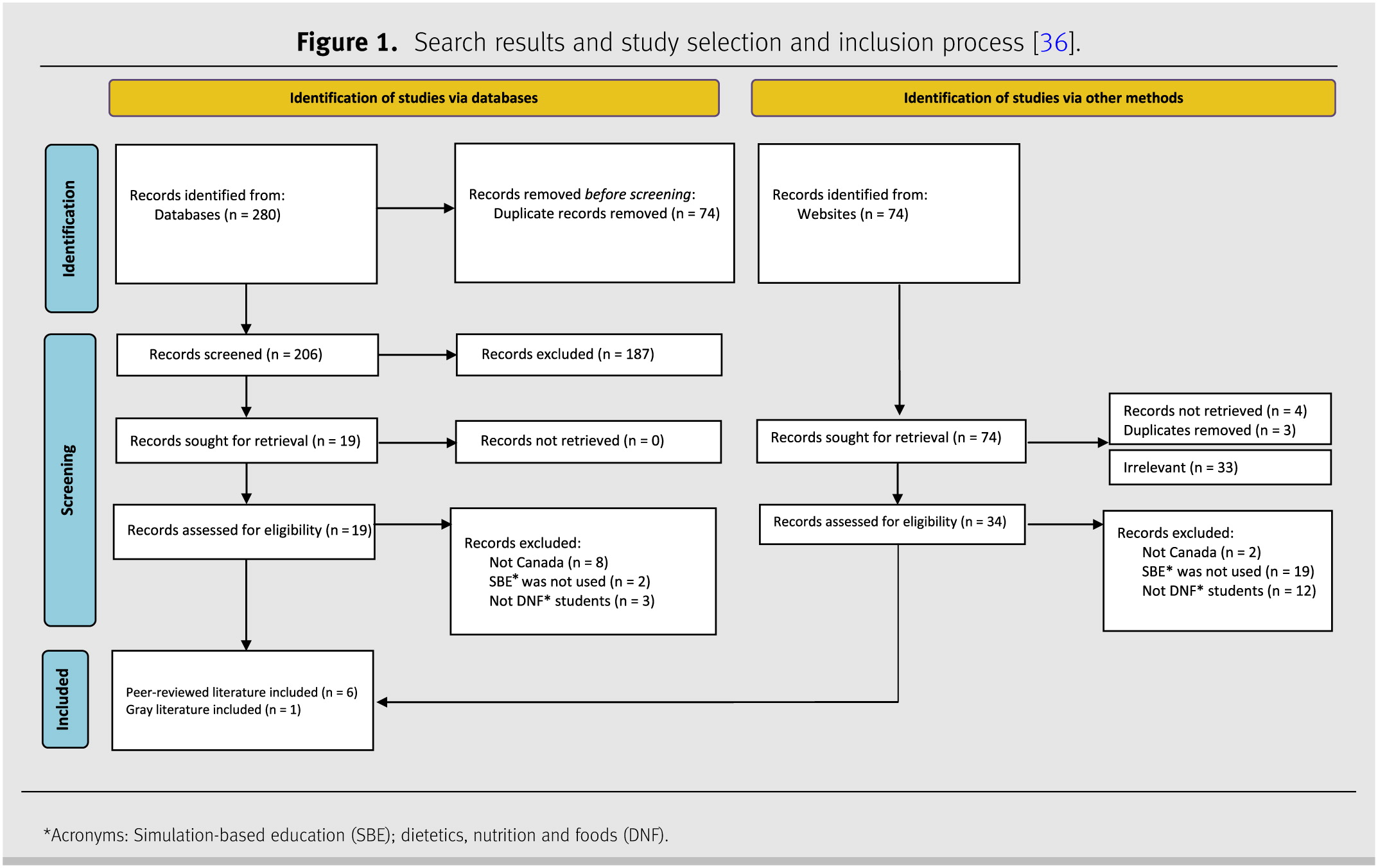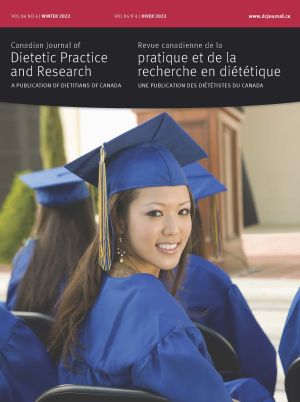DISCUSSION
Through mapping student interactions with SBE in Canada, we confirmed that additional research is warranted. Exploring research and methods employed in settings outside of Canada [
18,
24,
25] may provide insights on teaching, surveying, evaluation, and assessment practices that may be adapted to the Canadian context. This said, international similarities and differences between dietetics, dietetic education, and practice must be considered in the development of future research questions. Moreover, teacher and learner interactions with SBE have and continue to be an area of research of great interest for other health professions (e.g., nursing) [
3,
9,
12,
13]. Drawing from this body of work can provide insights into research and practice approaches, standards and “best practice”, that can also be adapted to the dietetic context, although profession-specific competency must be considered.
Before they can apply to write the Canadian Dietetic Registration Examination, DNF students must demonstrate competencies from seven domains of practice during their education and practicum [
38]. The pandemic limited the number of practical placements or internships available to dietetic students and interns, highlighting the need for flexible, creative, and person-centred pedagogy in training tomorrow’s dietitians [
10]. Through using realistic scenarios, SBE allows students to develop hands-on skills in their field, including areas such as critical assessment, problem solving, communication, conflict resolution, evaluation, and management [
2–
4] and has been shown to decrease risk to
all participants (e.g., patients, learners, teachers).
SBE has been an integral part of DNF education since the 1980s and provides some timely solutions for program barriers (e.g., placement access, IPE), but Canadian profession-led research is lacking. Our profession has a unique opportunity to revisit our learning objectives, activities, assessments, and evaluations, as we integrate the 2020 competencies [
38]; to co-create a symbiotic relationship between research and teaching and learning, so one informs the other, and together they (and we) are stronger. Examples of questions that could be asked include:
1.
Is SBE considered psychologically safe by dietetic educators and students engaging in an anthropometric assessment laboratory?
2.
Does a swallowing assessment simulation transfer knowledge and skills to students as effectively as practical experience with a patient in a clinical setting?
3.
What is the effect of an interprofessional conflict resolution simulation on learners’ satisfaction, knowledge, and behaviour pre- and post-simulation?
4.
Which professional and communication competencies are achieved through a simulated counselling session with a trained simulated patient and debrief?
We began the paper outlining that there are differences in naming SBE and experiential learning [
16,
21]. During this review, we also discussed nuances between the outcomes reported in the literature and the methods applied to measure them. For instance, perspectives, experiences, and knowledge inform point of view or perception, but perspective, experiences, and perception are not one outcome [
20,
39,
40]. Words, labels, and definitions matter and vary within and between disciplines, professions, countries, and individuals [
19]. In the case of this scoping review, for example, of the six peer-reviewed articles included, the journals in which they were published had categorized them as: (
i) perspectives in practice (n = 3), (
ii) research article (n = 2), and (
iii) report (n = 1). Those categorized as “perspectives and practice” and “report” were published in the Canadian Journal of Dietetic Research and Practice (CJDPR). Upon review, the authors found this work and the work that makes it up met the requirements to qualify as original research as defined by the Government of Canada, Cochrane, and JBI [
41–
43]. As CJDPR is committed to publishing research to help in identifying student needs towards dietetic education and professional development [
44], we ask dietetic educators to consider the language used in categorizing research, as it can impact knowledge exchange, synthesis, translation, and ultimately dietetic education.
Limitations
Two noteworthy limitations of this research, include (i) Only results available in English were included, excluding other languages (e.g., French) and potentially resulting in selection bias. Practical challenges such as time and funding constraints made the use of translation services infeasible for this project. (ii) The evidence from gray literature searches was based on publicly available websites; thus, it is possible that there is more evidence available than we were able to access.
IMPLICATIONS FOR RESEARCH AND RELEVANCE TO DIETETIC PRACTICE
Through sharing this work, we aim to contribute to and stimulate discussion and research, and to support those applying for funding for future research. By better understanding DNF students’ interaction with SBE and other teaching methods, dietetic educators can better assess whether students’ perceived and actual learning objectives are being met. Current research focuses significantly on student experience, confidence, and satisfaction, while there are limited data on evaluation of simulation as an educational activity (meeting teaching and learning outcomes) and in meeting competencies. Additional surveying of students, interns, educators, and dietitians is warranted, and subsequent mapping and synthesis.
Acknowledgements
We acknowledge the intellectual contributions of the University-Based Nutrition Programs Experiential Learning Working Group, including Sarah O’Brien, and dietetic educators at St. Francis Xavier University, Mount Saint Vincent University (MC, AM YZ AH, JFA, DL, SG), and Acadia University. Contributions to the grant applications that made this work possible were made by several dietetic educators at Mount Saint Vincent University, St. Francis Xavier University and Acadia University, all members of University-Based Nutrition Programs Experiential Learning Working Group. Also, relevant to acknowledge, are the contributions of Dalhousie University’s Centre for Collaborative Clinical Learning and Research (C3LR), current director Noel Pendergast, and co-authors (KH, KL).
Guided by the principal(s) co-conceptualized by Dr. Elder Albert Marshall including knowledge gardening (growing forward), co-learning, and the gift of multiple perspectives, dietetic educators, in Nova Scotia, established the University-Based Nutrition Programs Experiential Learning Working Group in 2020, a community of practice (CoP), with the goal of exchanging knowledge, skills, and strategies related to experiential learning, including simulation-based education.
Finally, we would also like to extend special thanks to YYZ’s MSc Supervisor, Dr. Anna Kate Shoveller, Department of Animal Biosciences (ABSc), University of Guelph, for allowing her to complete work on this manuscript post-graduation (BSc), Department of Applied Human Nutrition, Mount Saint Vincent University.
